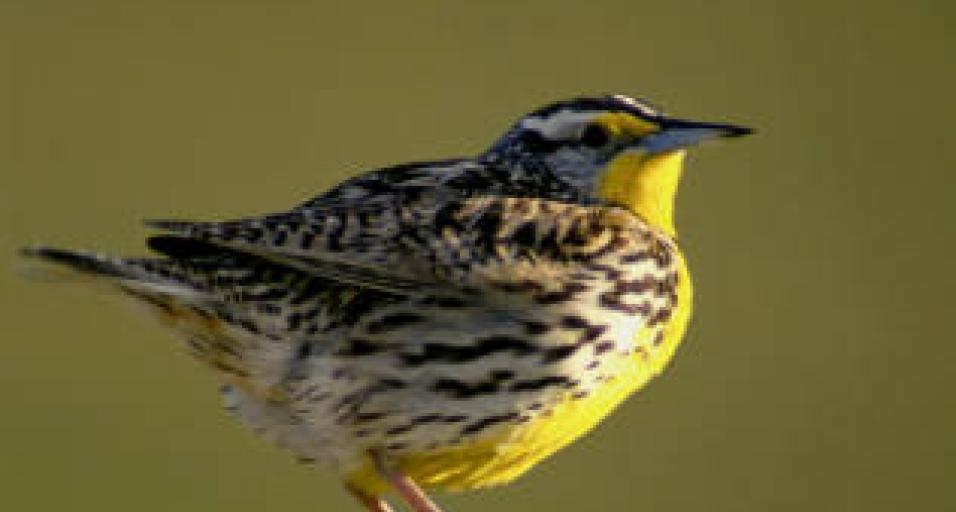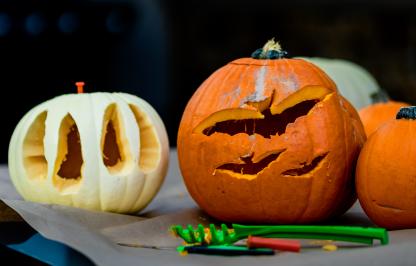The western meadowlark’s flute-like call is an introductory declaration of spring in Wyoming. Most other states west of the Mississippi can say the same thing. But they can’t say they were the first of six to name the western meadowlark their state bird. That’s been Wyoming’s bragging right since Feb. 5, 1927.
Meriwether Lewis gets credit for first documenting the bird on the famous expedition. The bird piqued his interest, so he shot one in the Great Falls, Montana area June 1805 and injected a comparison with the eastern species in his journal.
Despite being called a lark, our state bird is in the blackbird family. It will sometimes prove it by migrating and wintering with kinship grackles, starlings and various blackbirds. But the blackbird reunion is over come spring when it’s time to start the singing. Sometime in late April or early May, the song seduces a female or two to his territory.
Females prefer a shallow depression on the ground for nesting. They’re known for weaving existing vegetation into a nest, complete with a partial roof and a grass tunnel entrance. The engineering helps protect the average of five spotted-white eggs. The floor is a soft bed of grass that sometimes includes cattle, horse or wild mammal hair for extra cushion. Thirteen to 14 days later, Wyoming (and the other five states) boast more state birds. Both parents help feed insects to the brood.
Using the blackbird family technique of “gaping,” meadowlarks stick their beaks in soft soil. They open their mouths and survey the opening quick for a worm or whatever invertebrate might be exposed. The adults eat insects, too, at least until cold temperatures force the switch to weed seeds and grain. When the winter’s particularly tough, our state bird’s been known to peck at roadkill but rarely if ever appears at a bird feeder.
After the season’s first meadowlark family is fledged, mom and dad give it another try. That’s a lot of work for the birds, but it works out well for those of us that enjoy their trademark song, which has an amazing ability to permeate even the most tightly-sealed vehicle, through most of the summer.
Wyoming’s state bird trendsetting got rolling in 1926. In response to an Audubon Society initiative, Mrs. Olga Hett asked the eighth graders in her rural Thermopolis school to write an essay promoting a state bird. Lewis Freudenthal liked hearing the western meadowlark as he rode his horse to the Belleview School and wrote: “Isn’t it great to be out in the morning in the fields and hear the larks sing? Is there any other bird of Wyoming that has such a beautiful song? Is the lark not the first to be here in the spring?”
Hett submitted Lewis’ words to the Thermopolis newspaper and a couple other Wyoming papers picked it up, too. Dr. Grace Raymond Hebard, an influential University of Wyoming professor and board of trustees’ member, championed the cause. State Sen. Dr. Robert Hale of Thermopolis carried the banner to Cheyenne and introduced the legislation. The first-term democrat’s bill sailed through both the senate and house without a dissenting vote and it was signed into law by Gov. Frank Emerson. Perhaps Freudenthal’s essay helped pave some political karma to the capital. His son, Dave, would also sign bills as a Wyoming governor from 2003-2011.
Wyoming led the way with the western meadowlark state bird. Just five months later Oregon followed suit, then Nebraska in 1929, Montana 1931, Kansas 1937 and North Dakota 1947. Only the cardinal has more state bird designations with seven. And maybe even more noteworthy in leading the way, the Equality State was just five days short of featuring the country’s first state bird. Texas crowned the mockingbird their state bird Jan. 31 that year.
-
Thanks to Wyoming State Archives for their assistance with this story. Photo courtsey of USFWS.
Western meadowlark emergence marks the beginning of spring in Wyoming
Wyoming Game and Fish (307) 777-4600



